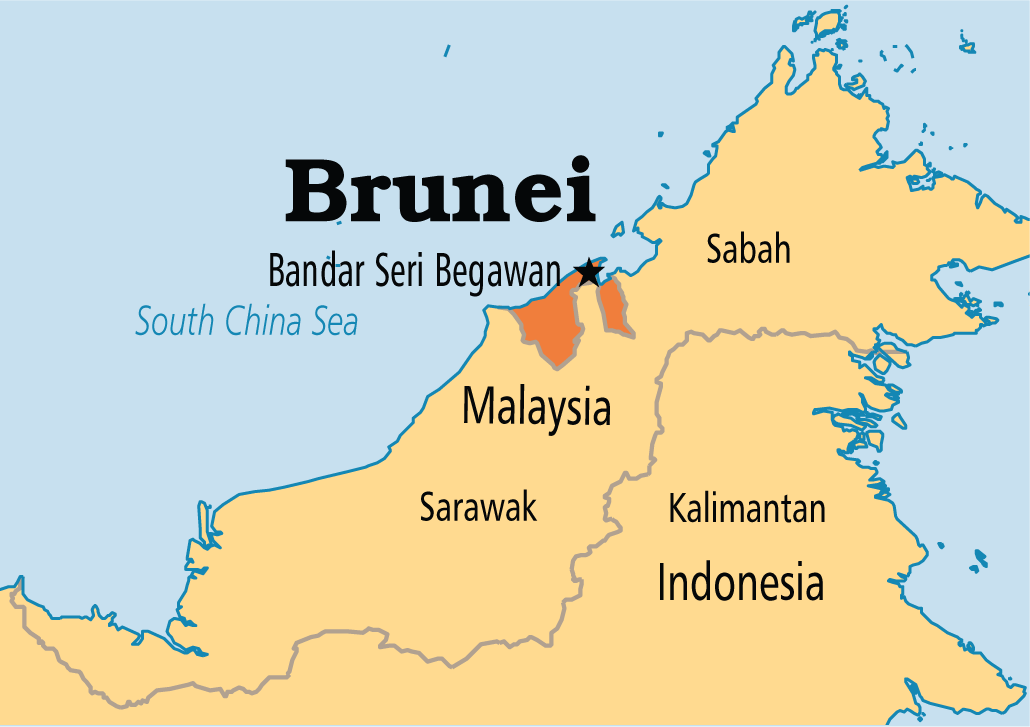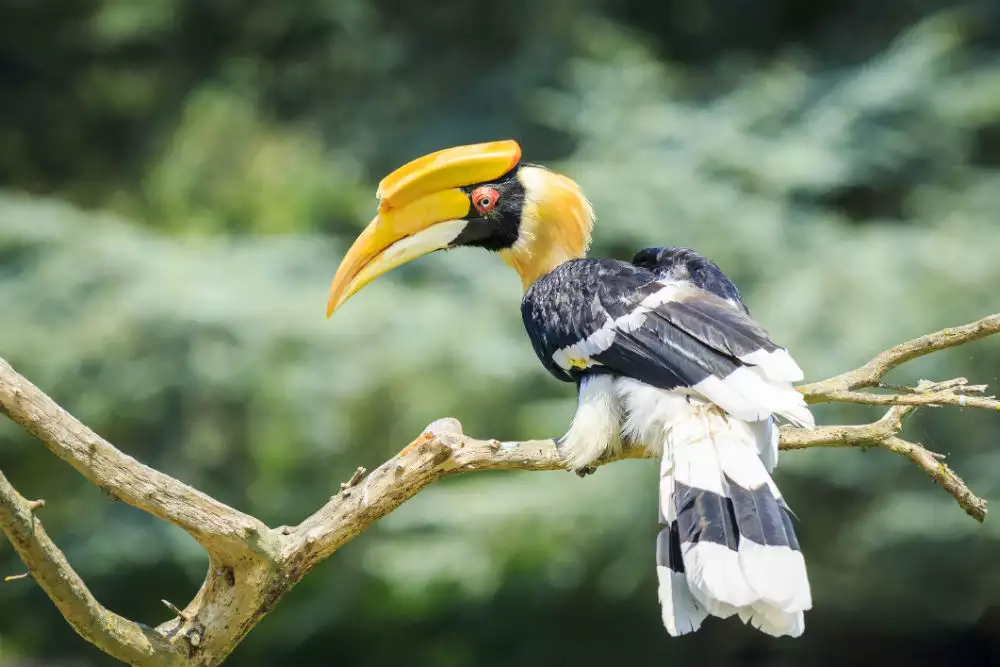Social Justice
‘A Future for the World's Children’ Report
Why in News
Recently, the World Health Organization (WHO), UN Children’s Fund (UNICEF) and The Lancet medical journal have released ‘A Future for the World's Children’ report.
- The report calculates the Flourishing Index and Sustainability Index of 180 countries.
- India secures 131st rank on a flourishing index that measures the best chance at survival and well-being for children.
- Further, India ranked 77th on a sustainability index that takes into account per capita carbon emissions and the ability of children in a nation to live healthy lives.
Flourishing Index
- Methodology:
- Flourishing is the geometric mean of Surviving and Thriving.
- The parameter of Surviving considers maternal survival, survival in children younger than 5 years old, suicide, access to maternal and child health services, basic hygiene, sanitation, and lack of extreme poverty.
- The parameter of Thriving considers educational achievement, growth and nutrition, reproductive freedom, and protection from violence.
- Global Scenario:
- Norway leads the table for survival, health, education and nutrition rates - followed by the Republic of Korea and the Netherlands.
- The Central African Republic, Chad and Somalia rank at the bottom.
- It also mentioned that the world’s survival depended on children being able to flourish, but no country is doing enough to give them a sustainable future.
- Marketing of Junk Food:
- The Index has linked an aspect of harmful marketing of junk food and sugary beverages with the alarming rise in childhood obesity.
- Thus to protect children, it has called for a new global movement driven by and for children.
Sustainability Index
- Methodology:
- The Sustainability Index ranks countries on the basis of excess carbon emissions compared with the 2030 target.
- It also states that today’s national conditions for children to survive and thrive must not come at the cost of eroding future global conditions for children’s ability to flourish.
- Global Scenario:
- The leading countries in the Flourishing Index trail behind in the case of the Sustainability Index, with Norway (156th), the Republic of Korea (166th) and the Netherlands (160th).
- Each of the three emits 210 per cent more CO2 per capita than their 2030 target.
- The only countries on track in Flourishing as well as in Sustainability Index are Albania, Armenia, Grenada, Jordan, Moldova, Sri Lanka, Tunisia, Uruguay and Vietnam.
- The lowest emitters are Burundi, Chad and Somalia whereas the U.S, Australia, and Saudi Arabia are among the 10 worst emitters.
- The leading countries in the Flourishing Index trail behind in the case of the Sustainability Index, with Norway (156th), the Republic of Korea (166th) and the Netherlands (160th).
Recommendations
- It suggests the elimination of CO2 emissions with the utmost urgency and requests to place children and adolescents at the centre of global efforts to achieve sustainable development.
- New policies and investment in all sectors to work towards child health and rights with the incorporation of children’s voices into policy decisions.
International Relations
G20 Meeting in Saudi Arabia
Why in News
Recently, the ministers and central bankers from the world’s largest economies participated in G20 meeting held in Riyadh (Saudi Arabia).
- It was presided by Saudi Arabia. Saudi Arabia is the first Arab nation to hold the G20 presidency.
- The 2020 G20 Presidency will focus discussions, forums, working groups and Ministerial Meetings under the theme of “Realizing Opportunities of the 21st Century for All”.
Key Points
- Global Economy:
- The global economic growth remains slow and downside risks due to the geopolitical and remaining trade tensions, and policy uncertainty.
- Though the economic growth is expected to increase in 2020 and 2021 due to loose monetary policy and an easing of trade tensions.
- IMF’ Views at the Meeting:
- It projects a “V-shaped, rapid recovery” for the global economy, but it warns about the uncertainty around the spread of the coronavirus (COVID 19).
- The IMF also warned about other risks including rising debt levels in some countries as well as climate change.
- Demand for Global Taxation System:
- It discussed ways to achieve consensus on a global taxation system for the digital era by the end of 2020.
- It aims to allow governments to tax digital companies where they do business, rather than where they are registered for tax purposes.
- India has also demanded closer collaboration between international revenue agencies to investigate tax affairs of offenders who cross borders for escaping tax investigation.
- It discussed ways to achieve consensus on a global taxation system for the digital era by the end of 2020.
G-20
- About
- The G20 is an informal group of 19 countries and the European Union, with representatives of the International Monetary Fund and the World Bank.
- The G20 membership comprises a mix of the world’s largest advanced and emerging economies, representing about two-thirds of the world’s population, 85% of global gross domestic product, 80% of global investment and over 75% of global trade.
- Headquarter
- The G20 operates as a forum and not as an organisation. Therefore, it does not have any permanent secretariat or management and administrative structure.
- Origin
- 1997-1999 Asian Financial Crisis: This was a ministerial-level forum which emerged after G7 invited both developed and developing economies. The finance ministers and central bank governors began meeting in 1999.
- Amid 2008 Financial Crisis the world saw the need for a new consensus-building at the highest political level. It was decided that the G20 leaders would begin meeting once annually.
- Members
- The members of the G20 are Argentina, Australia, Brazil, Canada, China, France, Germany, India, Indonesia, Italy, Japan, Republic of Korea, Mexico, Russia, Saudi Arabia, South Africa, Turkey, the United Kingdom, the United States, and the European Union.
- One nation holds the Chair every year, known as 'G20 Presidency'. Argentina chaired the G20 summit of 2018 and Japan for 2019.
- A V-shaped recovery is characterized by a sharp economic decline followed by a quick and sustained recovery.
- The recession of 1953 is an example of a V-shaped recovery.
- A V-shaped recovery is different from an L-shaped recovery, in which the economy stays in a slump for a prolonged period of time.
Indian Polity
International Judicial Conference 2020
Why in News
The International Judicial Conference 2020 was held from 21st-23rd February, 2020 in New Delhi.
- The Conference was organized by the Supreme Court of India.
- The theme of the Conference was ‘Judiciary and the Changing World’.
- Important Topics of discussion at the Conference included :
- Gender Justice,
- Contemporary Perspectives on Protection of Constitutional Values,
- Dynamic Interpretations of the Constitution in a Changing World,
- Harmonisation of Environment Protection vis-à-vis Sustainable Development and
- Protection of Right to Privacy in the Internet Age.
Highlights from the Conference
- Sustainable Development: The Indian judiciary was appreciated for its balance between development and environment, and continued guidance in it.
- E.g. Judgement on Sardar Sarovar Project
- Increased Accessibility: The Supreme Court was hailed for the “extraordinary effort” to make its judgments more accessible to the common man by making them available in nine vernacular languages, keeping in mind the nation’s linguistic diversity.
- Gender Justice: The recent directives for granting equal status to women in the Army, guidelines for preventing sexual harassment at the workplace, etc. were appreciated.
- Global Reference: The Chief Justice of India said that the Supreme Court’s judgments are cited by courts of other countries and have served as a “beacon of hope” to independent and developing nations.
- A 2001 verdict of the South African court cited the Indian case of Narain Das Jain v Agra Nagar Mahapalika decided by the Supreme Court in 1991 to benchmark the compensation to be provided while acquiring land.
- Use of ICT: The need for technology was highlighted to deliver speedy justice.
- The Government is making an effort to connect every court of the country to the E-court Integrated Mission Mode Project. The establishment of the National Judicial Data Grid will make court procedures easier.
- Future Challenges: It was highlighted that issues like data protection and cyber crimes pose new challenges for the judiciary.
E-court Integrated Mission Mode Project
- The E-Courts Project was conceptualised on the basis of "National Policy and Action Plan for Implementation of Information and Communication Technology (ICT) in the Indian Judiciary - 2005" submitted by e-Committee of the Supreme Court of India (set up in 2004).
- The main objectives of the e-Court Project are as follows:
- To provide efficient & time-bound citizen centric service delivery.
- To develop, install & implement decision support systems in courts.
- To automate the processes to provide transparency of Information access to its stakeholders.
- To enhance judicial productivity both qualitatively & quantitatively, to make the justice delivery system affordable, accessible, cost effective & transparent.
- The e-Courts National portal (ecourts.gov.in) was launched in 2013. This provides Case Status, daily Case-list, Cases Filed and Cases Registered through the Case information System (CIS) Software.
- The National Judicial Data Grid (NJDG) is a part of the e-Courts Integrated Mission Mode Project. It was launched in 2015. The aim is to track judicial performance across different courts in the country.
- The NJDG is working as National data warehouse for case data including the orders/judgments for Courts across the country.
- NJDG works as a monitoring tool to identify, manage & reduce pendency of cases.
- It also helps to provide timely inputs for making policy decisions to reduce delay and arrears in the system, facilitate better monitoring of court performance and systemic bottlenecks, and, thus, facilitate better resource management.
- NJDG has specifically helped India improve its ranking in World Bank's Ease of Doing Business Report.
Indian History
Archaeological Site near Varanasi
Why in News
A nearly 4,000-year-old urban settlement has been unearthed in Babhaniyav village (13 km from Varanasi, Uttar pradesh) by a team of surveyors from the Banaras Hindu University (BHU).
- The unearthed site could be one of the craft villages mentioned in ancient texts.
- During the age of Buddha, there were suburban villages which were in the nature of craft villages, for instance, a carpenter's village, or chariot-maker’s village in the vicinity of Varanasi.
- Crafts villages have been earlier unearthed in Sarnath, Tilmapur and Ramnagar - Uttar Pradesh.
- Initial survey of the site in Babhaniyav village had found a temple dating back to the 5th Century AD through 8th Century AD, potteries which are 4000-year-old and walls which are 2000-year-old.
- Surveyors have also found a pillar with a two-line text in the Kushan-Brahmi script.
- The Kushan dynasty ruled over most of the northern Indian subcontinent, Afghanistan, and parts of Central Asia during 1st century AD - 3rd Century AD.
- The inscriptions issued by the Kushan rulers or in areas under their rule include texts in Bactrian, written in Greek script, and in Prakrit written in Brāhmī or Kharoṣṭhī script.
- The site gains significance because of its proximity to Varanasi, which is said to be 5,000 years old, though modern scholars believe it to be around 3,000 years old.
- According to the experts, the site could be a small sub-centre of Varanasi which grew as an urban town.
- The findings are important as Babhaniyav could have been a satellite town and feeding centre for the Varanasi-Sarnath region.
- A satellite town is a smaller city that is near a large(r) metropolis. It has all the necessary amenities and facilities present within its limits except for a few purposes like employment and sometimes education, it has to depend on the larger city.
Varanasi
- Varanasi is in southeastern Uttar Pradesh state. It is located on the left bank of the Ganges (Ganga) River and is one of the seven sacred cities of Hinduism.
- It is one of the oldest continuously inhabited cities in the world. Its early history is that of the first Aryan settlement in the middle Ganges valley.
- Varanasi was the capital of the kingdom of Kashi during the time of the Buddha (6th century BCE), who gave his first sermon nearby at Sarnath.
- The city remained a centre of religious, educational, and artistic activities as attested by the celebrated Chinese Buddhist pilgrim Xuanzang, who visited it in about 635 CE.
- Varanasi subsequently declined during three centuries of Muslim occupation, beginning in 1194.
- Varanasi became an independent kingdom in the 18th century, and under subsequent British rule it remained a commercial and religious centre.
- In 1910, the British made Varanasi a new Indian state, with Ramnagar (on the opposite bank) as headquarters but with no jurisdiction over the city of Varanasi.
- In 1947, after Indian independence, the Varanasi state became part of the state of Uttar Pradesh.
Biodiversity & Environment
Pakke Tiger Reserve
Why in News
The Government of Arunachal Pradesh is planning to build a 692.7 km highway through the 862 sq km Pakke Tiger Reserve (PTR) in East Kameng district, Arunachal pradesh.
- Named the East-West Industrial Corridor, the highway aims to connect Arunachal Pradesh with Assam. However, the project makes no mention of compensation for people likely to be displaced.
- It has been argued that corridor will also be a threat to the adjoining Nameri Tiger Reserve in Assam.
Pakke Tiger Reserve
- Pakke Tiger Reserve (declared in 1999 - 2000) lies in the foothills of the eastern Himalaya in the East Kameng district of Arunachal Pradesh. It is also known as Pakhui Tiger Reserve.
- It falls within the Eastern Himalaya Biodiversity Hotspot.
- It is home to over 2000 species of plants, 300 species of birds, 40 species of mammals, 30 species of amphibians and 36 species of reptiles. Many species of the flora and fauna are globally threatened, and PTR is one of the last remaining strongholds left for these species.
- It is known for its amazing sightings of four resident hornbill species.
- India is home to nine species of hornbills. The northeastern region has the highest diversity of hornbill species within India. Five hornbill species are found here, with the northeast being the exclusive habitat for three of them, the wreathed hornbill (Aceros undulatus), the brown hornbill (Anorrhinus austeni) and the Rufous-necked hornbill (Aceros nipalensis). The other two species, the great hornbill (Buceros bicornis) and the Oriental pied hornbill (Anthracoceros albirostris) also occur in other parts of India.
- The great hornbill is the state bird of Arunachal Pradesh and Kerala. It is ‘vulnerable’ under the IUCN Red list.
- The Hornbill festival celebrated in Nagaland is named after the bird – Hornbill which is the most revered and admired bird for the Nagas.
Nameri Tiger Reserve
- Nameri Tiger Reserve (declared in 1999-2000) is located in the foothills of the eastern Himalayas in the Sonitpur district of the state of Assam.
- It is on the interstate border with Arunachal Pradesh. The Pakke Tiger Reserve of Arunachal Pradesh adjoins it on its north-eastern point.
- The river Jia-Bhareli (a tributary of Brahmaputra River) with its tributaries, the Nameri, Upper Dikorai and Bor Dikorai flow through the Reserve.
- Besided Tiger, the reserve is also home to the sambar, barking deer, wild boar and bison.
Important Facts For Prelims
Malai Mahadeshwara Wildlife Sanctuary
Why in News
The Malai Mahadeshwara Wildlife Sanctuary will be declared as a tiger reserve soon.
- Also, with this notification, Karnataka will have six tiger reserves, the others being Nagarahole, Bhadra, and Anshi-Dandeli, Bandipur and Biligiri Ranganatha Temple (BRT) Tiger Reserves.
Key Points
- Malai Mahadeshwara Wildlife Sanctuary is located in the Chamarajanagar district of Karnataka.
- Once notified, Chamarajanagar district of Karnataka will have three tiger reserves. It already has Bandipur and BRT Tiger Reserve within its territorial limits.
- It is spread over 906.18 sq km – is contiguous to BRT Tiger Reserve, Sathyamangalam Tiger Reserve and the Cauvery Wildlife Sanctuary.
- The area was declared as Wildlife Sanctuary in 2013.
- It consists mainly of dry deciduous type degrading to scrub forest in the fringe areas, and are interspersed with patches of moist deciduous, semi-evergreen, evergreen and shola forests occurring at varying altitudes.
- Animals including tiger, elephant, leopard, wild dog, bison, sambar, spotted deer, barking deer, sloth bear, wild boar, four-horned antelope, black-naped hare, common langur, bonnet macaque, honey badger (ratel), varieties of reptiles, birds, etc. are found in the wildlife sanctuary.
Important Facts For Prelims
Craspedotropis Gretathunbergae
A group of scientists have recently discovered a new species of land snail in Brunei.
- The new species reside in tropical rainforests and is sensitive to drought and extreme temperatures (which have become more frequent due to climate change).
- Hence as an honour to Swedish Climate Change activist Greta Thunberg, who has been making efforts to raise awareness about climate change, the new snail species was named as Craspedotropis Gretathunbergae.
- Recently, a tiny species of beetle was also named after her as Nelloptodes Gretae.
- In 2018, a new species of beetle (Grouvellinus Leonardodicaprioi) was named after the actor Leonardo DiCaprio (an American actor, producer, and environmentalist).
Important Facts For Prelims
Kawal Tiger Reserve
- Kawal Tiger Reserve is located at Adilabad district in Telangana state of India.
- The Government of India declared Kawal wildlife sanctuary as Tiger Reserve in 2012.
- The Kawal wildlife sanctuary was established in 1965 and later declared as the Protected Area (PA) in 1999 under the Wildlife Protection Act, 1972.
- Flora: Dry Deciduous Teak Forests mixed with Bamboo.
- Fauna: Mammal species that have been sighted include tiger, leopard, gaur, cheetal, sambar, nilgai, barking deer, chowsingha, sloth bear.
- The River Kadam (a tributary of Godavari) flows through this area.
- The area is increasingly getting threatened by growing human encroachments, rampant poaching, illegal wood felling and habitat loss.






